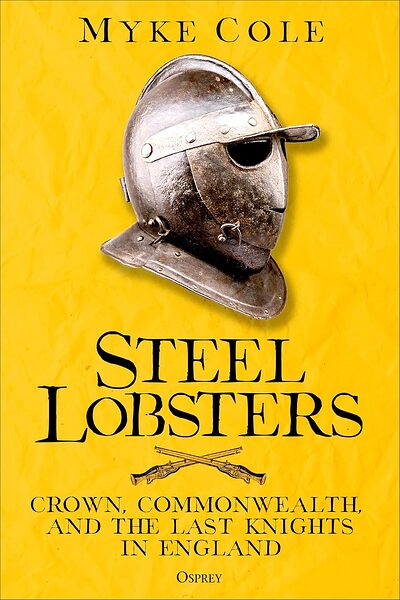Looking for a good read? Here is a recommendation. I have an unusual approach to reviewing books. I review books I feel merit a review. Each review is an opportunity to recommend a book. If I do not think a book is worth reading, I find another book to review. You do not have to agree with everything every author has written (I do not), but the fiction I review is entertaining (and often thought-provoking) and the non-fiction contain ideas worth reading.
Book Review
Knights With Guns
Reviewed by Mark Lardas
November 10, 2024
“Steel Lobsters: Crown, Commonwealth, and the Last Knights In England,” by Myke Cole, Osprey Publishing, November, 2024, 272 pages, $32.00 (Hardcover), $22.40 (e-book)
In 1643 Britain fielded its last regiment of fully armored cavalry. Myke Cole describes them as knights with guns.
“Steel Lobsters: Crown, Commonwealth, and the Last Knights In England,” by Myke Cole relates the history and fate of that unit. It also places them in their historical context.
The regiment, known as “the Lobsters,” was raised during the English Civil War of 1642 through 1651. The unit was not made up solely of knights – men belonging to orders of knighthood – although several of its soldiers were knights. Its members did wear the full armor that medieval knight wore, although their weapons were those of 17th century cavalrymen, including carbines and pistols. Ironically, despite an appearance appropriate for nobility, it was a Parliamentary unit, fielded by rebels in arms against King Charles I.
Cole follows the leader of the Lobsters, Sir Arthur Hesilrige, and his primary adversary, Richard Atkyns, through their respective careers to their climatic encounter during the battle of Roundway Downs in July 1643. Cole examines both men, tracing how Hesilrige ended up supporting the Parliamentarians, while Atkyns adhered to the king and Royalist cause.
Cole takes readers into the warfare of the era. He shows how armies were equipped and fought, and the weapons and tactics they used. He shows how and why cavalry were deployed during the period and how combat experience altered the tactics. He explains why the iconoclastic Parliamentarians initially stuck to outmoded, older cavalry tactics while the traditionalist Royalists employed more modern melee tactics.
The book offers one of the best capsule descriptions of both the Thirty Years War and the related, but separate, English Civil War. Cole offers readers insight into why each war occurred and why they fell out as they did. It would be worth reading just for that.
It offers much more. Cole brings warfare down to the personal level. He shows what it was like to be a soldier during that period. He explains their motivations and relates the experience of personal combat. He takes readers through the sights, sounds, and smells of combat. Cole draws on personal experience in combat during the Iraq War, showing how little human nature has changed in 400 years.
“Steel Lobsters” is an outstanding book. It is well worth reading for anyone with an interest in the English Civil War – or anyone wanting to know what personal combat is like without personally experiencing it.
Mark Lardas, an engineer, freelance writer, historian, and model-maker, lives in League City. His website is marklardas.com.
